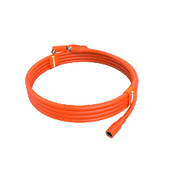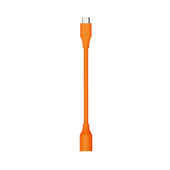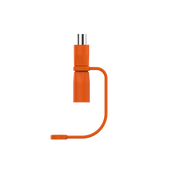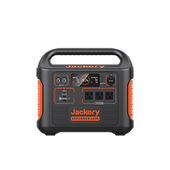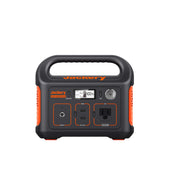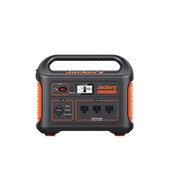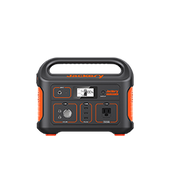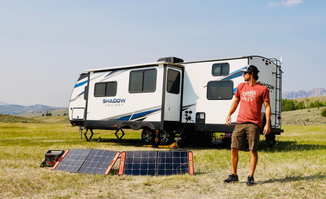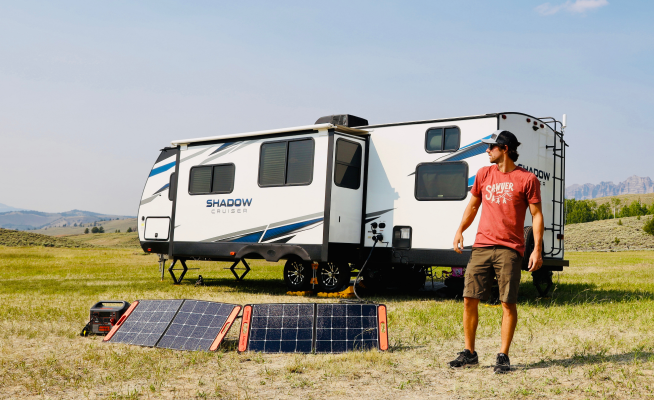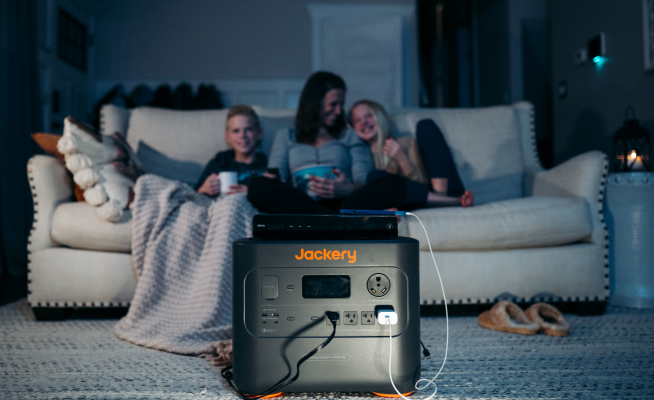The Ultimate Guide To Solar Panel Calculation
Solar power is a sustainable energy solution, and the goal is to make the most out of it and reduce dependence on the electrical grid. While switching to solar energy seems easy, calculating the number of solar power panels required can be challenging.
During solar panel calculation, there are a variety of factors that you need to keep in mind. These include geographic location, home energy usage, number of sun's peak hours, etc.

If you live in a location that receives few peak hours of sunlight, consider purchasing Jackery SolarSaga Solar Panels with a high conversion rate. These solar panels can convert most solar energy to usable electricity.
But before you purchase solar panels for your power needs, read this guide. This guide will help you calculate the load wattage, power output, energy usage, backup time, etc., of the solar panels, so you make the best choice.
What Is a Solar Panel?

A solar panel (also called a photovoltaic cell or PV panel) is a device that converts the sun's energy into electricity. The energy generated is then used to charge power stations, which power all your electrical appliances.
Solar panels consist of individual solar cells composed of silicon, phosphorus, and boron. When photons from the sun's energy strike the surface of a solar panel, they knock out the electrons to create a directional current.
DC current directly transfers from the solar panels to the power station, where the inverter converts it to AC electricity. Using the combination of power stations and solar panels, you can quickly charge electrical appliances at home or during outdoor adventures when you are away from the electrical grid.
The Benefits of a Solar Panel
Solar panels are a clean and renewable energy source for homeowners and outdoor enthusiasts. Below are the benefits of using a solar panel and power station to charge your appliances.
- Clean & Green Energy:Solar panels do not emit toxic fumes while converting the sun's energy into electricity. Hence, they are a clean, green energy source that reduces your carbon footprint.
- Zero Maintenance:Solar power panels are easy to clean and maintain. All you need to do is wipe the dust off with a soft, clean cloth to improve its efficiency.
- Safe:Unlike gas generators, solar panels do not require coal or gas to generate electricity. Hence, they are pretty safe for indoor use.
- Reduces High Electricity Bills:You can power all your home appliances with solar panels and a portable power station. Thus, renewable energy helps reduce high electricity bills and save money.
- Eco-friendly:Solar panels reduce the emission of greenhouse gases like carbon dioxide, nitrogen oxides, sulfur oxides, etc., into the atmosphere, making them an environment-friendly power solution.
Solar Panel Calculation
There is no single accurate answer to how many solar panels a home needs. Every home is different, and so are its power needs. Using a solar panel calculator and understanding various variables gives an accurate estimate of how many panels you'll require. Some essential factors you'll need to consider are load wattage, energy usage, solar panel backup time, efficiency, etc. Let us discuss each aspect in detail.
Solar Panel Output Calculation
Generally, solar panels produce a few hundred watts to 400 watts per hour. However, there are several external variables that affect the actual output of the panels.
Some important factors include how many hours of sunlight the solar panels receive, your location, and how many watts your panels can produce in an hour.
Formula:
To help you understand better, here is the mathematical solar panel calculation of daily watt-hours.
Daily watt hours = Average hours of sunlight × solar panel watts × 85%.
(As not all the sunlight is converted into electricity, we tested to determine that the Jackery solar panels are 85% efficient.)
Example:
Suppose you live in an area that receives 4 hours of peak sunlight, and your panel has a 100-watt rating. In this case, the solar panel output will be:
Daily watt hours = 4 × 100 × 0.85 = 340Wh.
That means one solar panel with a 100-watt capacity can produce around 340 Wh, depending on its efficiency.
For instance, if you purchase Jackery SolarSaga 100W Solar Panels, you can enjoy a high conversion rate and efficiency. Along with the portable power station, these solar panels can convert sunlight into electricity and power appliances.Load Wattage Calculation
The load wattage is the next important thing you'll need to keep in mind while buying a solar panel system. In simple words, load wattage involves analyzing your power requirements by understanding how many appliances you wish to charge and for how much time.
Formula:
To calculate the total load wattage of the electrical appliances, you need to multiply the power used by each device by the number of usage hours per day. This will give you the total kWh per day of one appliance.
Example:
For instance, if you wish to run a refrigerator for 6 hours and it consumes 300 watts per hour, here is how to calculate its load wattage.
Load Wattage = 300 × 6 = 1800 Wh.
Similarly, you can calculate the load of all other home appliances. Add them up, and you will get the total power you need for one day.
Energy Usage Calculation
The next crucial step for solar panel calculation is to determine your home's average electricity consumption and energy usage. The amount of energy an appliance uses in an hour is termed energy usage.
To get an estimated energy usage value, you need to figure out daily kWh usage, peak sun's hours, etc.
Formula:
Here is how you can calculate it:
Step 1: Calculate the kWh usage: First, you need to gather the kilowatt-hour usage from your electricity bills. Next, determine the average monthly kWh by adding 12 months of kWh usage and dividing it by 12. Divide the resulting number by 30 to calculate daily kWh usage.
Step 2: Determine peak sun hours: Note down the peak sun hours you receive. Remember, not every location gets the same amount or intensity of sunlight. To make the most of solar power, calculate the average sun hours you receive and move to the third step.
Step 3: Calculate Solar System Size: The last step is to determine the size or capacity of the solar system you'll need to power appliances. You can simply divide the daily kWh by the average sun hours. Then, multiply the result by the panel's efficiency to get an estimated solar system size.
Note: Always use highly efficient solar panels with a power station to charge appliances. Instead of connecting hundreds of solar panels, you can purchase a combination of powerful power stations with high battery capacity and connect them with solar panels.
Refer to the table to determine the energy needs of different appliances.
|
Kitchen Appliances |
Watts |
Living Room Appliances |
Watts |
Outdoor Appliances |
Watts |
|
Blender |
500 W |
TV |
150-200 W |
Band Saw |
1100 W |
|
Coffee Machine |
1000 W |
LED Bulb |
10-30 W |
Drill |
250-1000 W |
|
Dishwasher |
1200-1500 W |
Video Game Console |
150 W |
Electric Blanket |
200 W |
|
Electric Kettle |
1200 w |
Laptop |
100 W |
Hair Dryer |
1500 W |
|
Toaster |
850 W |
LCD Monitor |
100 W |
Dehumidifier |
280 W |
|
Electric Oven |
1200 W |
Printer |
100 W |
Circular Saw |
1100 W |
Solar Panel Backup Time Calculation
The backup time of the inverter or solar power station determines how long it can provide power during outdoor adventures or power outages. The backup time of a solar energy system depends on the solar battery size and charge consumed by the appliance.
The battery capacity is generally measured in AH (ampere-hour). The most common battery type is 12V, which provides 80% efficiency. The more the solar panel backup time, the longer you can run your devices.
Formula:
Here is how you can easily calculate it:
Battery Backup Time = (Battery AH × 12V × battery efficiency) ÷ Total power consumption.
Example:
Suppose you are running an appliance that consumes 100W of energy. In this case, the backup time will be: (100 AH × 12 V × 0.8) ÷ 100 watts = 9.6 hours.
Hence, you can run the appliance for 9.6 hours with a 100 AH battery capacity solar power system.
Solar Panel Cost Calculation
With the increasing popularity of solar panel systems, many homeowners are planning to harness solar energy. However, the cost associated with solar panels before switching to renewable energy is worth noting.
The main factors that affect the overall cost of solar panels include the type of panels you wish to install. For instance, if you're planning to install monocrystalline solar panels that are highly efficient, you'll need to pay a few extra bucks.
Other factors influencing solar panel calculation include size, conversation rate, and other relevant features of solar power panels.
Alternatively, you can use the solar panel cost calculator to determine the overall expenses.
Solar Panel Paycheck Period Calculation
The solar panel payback period is the estimation of the time it takes for the solar panel system to generate enough energy savings so you can offset the initial investment.
Formula:
The simple formula to calculate the payback period is the total cost of the system divided by the average yearly energy savings.
Payback Period = Total cost of solar panel system ÷ Average yearly energy savings.
Example:
Suppose you've purchased a solar system of $20,000 that helps you to reduce your electricity bills by $70 per month.
In this case, the average yearly energy savings will be $70 × 12 = $840.
Payback period = $20,000 ÷ $840 = 24 years.
Hence, solar panel systems will take 24 years to completely offset the initial investment.
Solar Panel Efficiency Calculation
Solar panel efficiency, in simple words, represents the amount of sunlight a solar panel can convert into usable electricity. It is calculated by dividing the amount of electricity produced by the solar panel by the amount of the sun that strikes the solar panel.
Formula:
Here is the mathematical representation of the solar panel efficiency.
Efficiency (%) = [(Pmax ÷ Area) ÷ 1000] × 100%.
Where
Pmax = Maximum solar panel power (measured in watts).
Area = Length × Width of solar panels (measured in sq. M).
1000 = Conversion factor to convert power output per unit area from watts per sq. M to percent.
Example:
Suppose you have a solar panel with a maximum power output of 200W and a surface area of 1.6 m2. The efficiency of solar panels would be:
Efficiency = [(200 W ÷ 1.6 m2) ÷ 1000] × 100% = 12.5%.
In this case, the solar panel efficiency is 12.5%. That said, it can convert 12.5% of the sunlight that hits the panels to electricity.
|
Surface Color |
Fraction of Incident Radiation Absorbed |
|
Dark blue to black |
0.80-0.90 |
|
Dark brown to blue |
0.70-0.80 |
|
Green, red, and brown |
0.50-0.70 |
|
Grey to dark grey |
0.40-0.50 |
|
White smooth surfaces |
0.25-0.40 |
Solar Panel Insolation Calculation
Solar panel insolation is the amount of solar energy that falls on the surface area in a specific amount of time. It is measured in kilowatt-hours per square meter per day (kWh/m2/day).
Formula:
To calculate the solar panel insolation, you can use the following formula:
I = E / A × t
Where
I = Solar insolation (kWh/m2/day)
E = Total solar energy that falls on the panel (kWh/m2)
A = Surface area (m2)
t = Length of time (day)
Example:
Suppose a 1 square meter of the surface area receives 5 hours of peak sunlight and 5 kWh of energy in a day. In this case, the insolation would be calculated as follows:
I = 5 kWh / 1 m2 × 1 day = 5 kWh/m2/day.
Note: The actual insolation will depend on multiple other factors, including but not limited to location, atmospheric conditions, time of year, etc.
How To Maintain Your Solar Panel?
Solar panels can efficiently generate electricity for decades as long as you maintain them well.
Here are a few simple ways to improve efficiency and maintain solar panels:
- Clean your solar panels frequently. Accumulation of objects, dust, and debris on the surface of solar panels can block some sunlight. Regular cleaning helps solar panels efficiently convert solar energy to electricity.
- Cover the portable power station when it is not in use. Store it in a clean and dry location, as dust and moisture may leak into the device and damage internal components.
- Avoid overloading the portable power station by connecting multiple devices to it. It's worth checking the rated power output of the solar panel specified by the manufacturer before plugging in the appliances.
- Use the portable solar power station frequently to keep the battery in good condition and prevent it from self-discharging.
Best Portable Solar Panels With Jackery

Jackery SolarSaga Solar Panels come with foldable handles, making them easy to carry wherever and whenever you go. With the highest efficiency in the industry, these solar panels convert more sunlight into usable electricity than other conventional panels.
Combining the solar panels with Jackery Explorer Portable Power Stations allows you to store the generated electricity in a lithium-ion battery and keep all your appliances charged. Made with monocrystalline solar cells, the three best Jackery SolarSaga Solar Panels help you make the most of solar power and ensure you can minimize your high electricity bills.
Below we compare the two best Jackery SolarSaga Solar Panels.
|
Products |
Compatible with |
Conversion Efficiency |
Input & Output Ports |
Specialty |
|
Jackery Explorer 240/500/1000 power station. |
24.3% |
USB-A Output: 5V, 2.4A USB-C Output: 5V, 3A |
With a weight of only 10.33 lbs, the solar panels are pretty portable and the perfect companion for outdoor travel. TPE rubber handle ensures easy setup and allows you to carry your power source easily. IP65 water resistant and ETFE-laminated case makes it suitable for harsh weather conditions. |
|
|
All the Jackery power stations. |
25% |
— |
IP68 waterproof and dustproof solar panels are designed for outdoor usage. Low iron full toughened glass boosts the durability of the panel and extends its lifespan. Extra-white glass and dual-sided panels increase the conversion rate. |
Solar Panel Calculation FAQs
Below are a few frequently asked questions about solar panel calculation.
How to reduce your energy consumption?
Saving energy can help you lower your electricity bills and reduce your carbon footprint. Here are a few ways to reduce power consumption:
- Draught-proof windows and doors to ensure energy is not lost.
- Turn off lights and other electrical appliances when you're not using them.
- Be careful with your washing machine by using it on a 30-degree cycle instead of at higher temperatures.
- Tumble dryer uses a lot of energy. Instead of using the appliance, try to dry clothes on racks.
- Invest in a solar power generator and use free and renewable solar energy to charge devices.
How to calculate the payback time of a solar panel?
The simple formula for payback time solar panel calculation is as follows:
Solar payback period = Total investment ÷ savings per year.
Suppose you've invested $12,000 in the solar system and you save $1200 per year; the payback period will be $12000 ÷ $1200 = 10 years.
How to calculate energy production per PV module?
The simple formula to calculate energy production per PV module:
E = A × r × H × PR
Where,
E = Energy (kWh)
A = Total area of the solar panel (m2)
r = Solar panel yield (%)
H = Annual average solar radiation on panels
PR = Performance Ratio (default value = 0.75). And PR of Jackery Solar Panels can reach up to 0.85.
Note: This is a general calculation, and the values can vary depending on the brand of the solar panel.
How to make full use of Jackery solar panels?
Jackery SolarSaga Solar Panels are highly efficient and help convert solar energy into usable electricity. To make the most of your solar panels, combine them with Jackery Explorer Portable Power Stations. With Jackery Solar Generator, you can charge all your small and large appliances using the sun's energy.

Final Thoughts
Solar panel calculation does not have to be daunting when you switch to solar energy. Simple measures can help you determine the size, cost, and efficiency of the solar power panels available on the market. If you are still confused about which solar panels to choose, consider the different Jackery SolarSaga Solar Panels models.
You can choose the right type of solar power panel depending on your power needs, budget, and preferences. Make sure to purchase Jackery Explorer Portable Power Station in addition to solar panels that can help you charge all your electrical appliances.
Before you go, sign up for the Jackery newsletter and get all the updates, exclusive deals, and promotional offers about the products.
Disclaimer:
The runtime mentioned for appliances powered by Jackery is for reference only. Actual runtime may vary under different conditions. Please refer to real-world performance for accurate results.






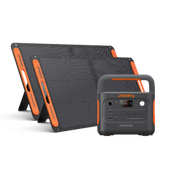


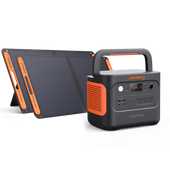

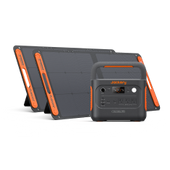
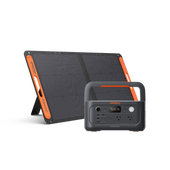
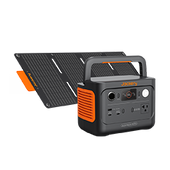
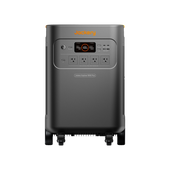
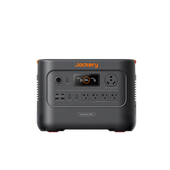
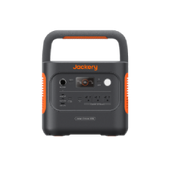
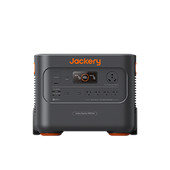
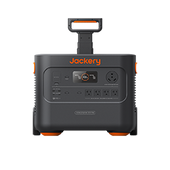

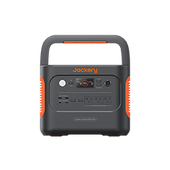
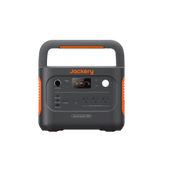
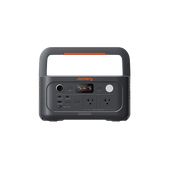

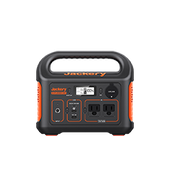
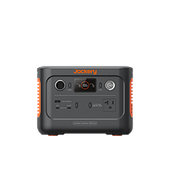
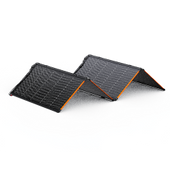
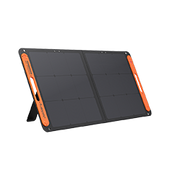


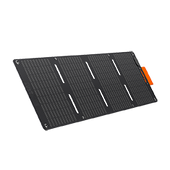
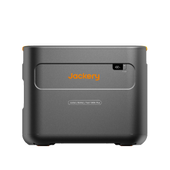
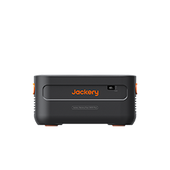
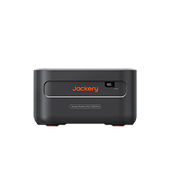
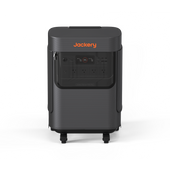
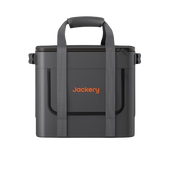

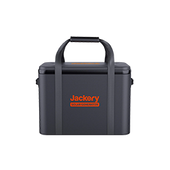
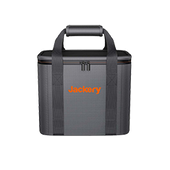
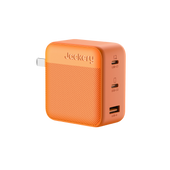
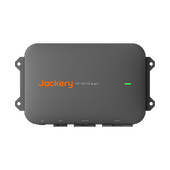
![[Add-on] Jackery Manual Transfer Switch for Explorer 5000 Plus](http://ca.jackery.com/cdn/shop/files/add-on-jackery-manual-transfer-switch-for-5000-plus-240V.webp?v=1757043692&width=170)
